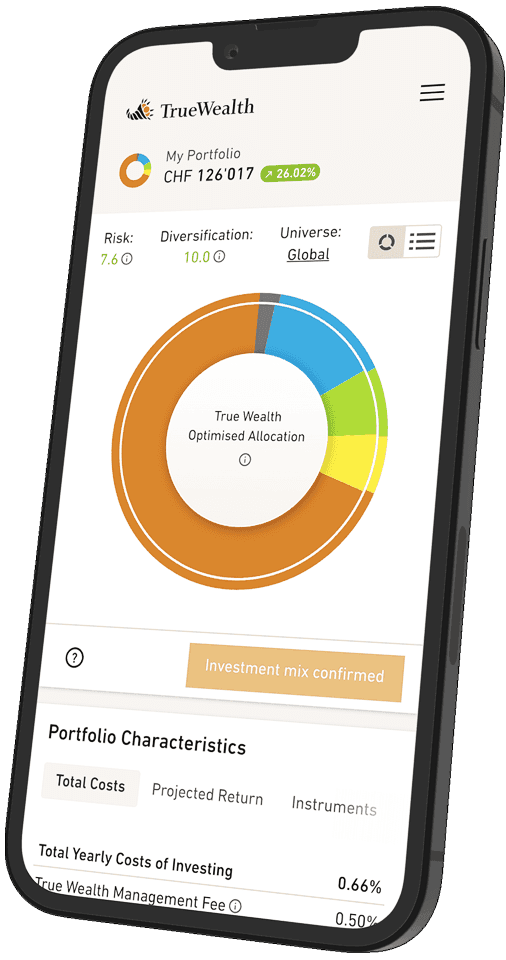
Staggering Investments: Forgoing Returns for a Good Night's Sleep
A conservative strategy that is repeatedly recommended is not to invest a large amount all at once. You can do this – if you forego returns.
Have you sold your house? Made an inheritance? Or had your pension fund paid out? Then you are probably now thinking about how best to invest your capital. And not just how - but also when: does it make more sense to make a large one-off investment or to divide the total sum into several small payments?
A conservative investment strategy that is repeatedly recommended for such cases is not to invest a large amount all at once. Instead, it should be staggered over time. That sounds good in principle.
After all, with a one-off investment there is a risk that the financial markets are currently at a high and prices will fall in the near future. (Even though it is of course just as possible that prices will rise in the next few months).
So is a staggered investment worthwhile?
Market timing in disguise
This is the wrong question to begin with.
A well-diversified portfolio has always beaten trying to predict the right time to enter and exit the market over the long term. Money that you won't need for the next ten years should therefore be fully invested as quickly as possible. And you should start as early as you can. It is best to invest everything in one go, but in such a way that you can stick to your strategy even after market slumps.
Everything else is market timing.
This makes perfect sense for the few who can do it. However, the vast majority of short-term thinking traders are not successful and soon give up. And medium-term thinking professionals are no better with their forecasts. It is statistically proven: Trying to time the market hurts returns.
Helps against pain
Psychologically, however, staggered investing makes perfect sense. Everyone has their own personal pain threshold. Many investors panic when an investment of CHF 100'000 loses 20 percent. But perhaps you are one of those hard-boiled people who can bear it if your investment of CHF 100'000 halves in the short term?
Whether it's 20 percent or 50 percent, every loss hurts. And even if, in retrospect, the markets have generally made up for setbacks after ten years at the latest - are you resilient enough to wait this time out? (We have dealt with loss tolerance in detail in another article. You will find the link at the end of this article).
Most investors are more comfortable with a setback on capital that they have previously gained - as long as the amount originally invested is retained. However, the pain is particularly great when a loss occurs immediately after the investment. Because then the loss not only affects past gains. But also the amount you have paid in.
So if you fear a correction in the near future, you can sleep more soundly with a staggered investment. Even if - in our experience - you will forgo returns with this decision.
How to invest in a staggered manner?
If you decide to invest on a staggered basis, you are basically acting like someone who is just building up their assets. You plan how much you want to invest. Decide how often you want to do this. And over what period of time.
For example, you could divide your assets into 36 equal installments and invest the same amount each month over the next three years. Or 60 equal installments over the next five years. Or twelve installments every quarter over the next three years. Whatever suits you best. Conveniently and automatically by standing order.
Average costs ensure diversification
While you regularly invest smaller amounts according to such a plan, you benefit from cost averaging.
You buy shares in an ETF with a fixed amount each time. When prices are high, you buy fewer shares - and when prices are low, you buy more. This creates an average price over a longer period of time.
However, the cost-average effect only has a measurable impact on short and medium-term investments. The longer your investment plan runs, the smaller the effect. This is because each individual transaction has less and less influence on the average price at which the units are acquired.
Cost averaging is a great thing. Especially for those who are just building up their assets. We have shown that it is better to invest regularly and not skip any installments even after losses. (See link at the end of this article.)
Is cost averaging enough to diversify your portfolio?
At first glance, a staggered investment also diversifies the portfolio. This is because when investing in different asset classes, more shares are automatically bought in those ETFs where prices are low. When prices are high, the investor only buys a smaller number.
In the long term, however, staggered investing does not lead to better diversification of the portfolio. This is because the proportions of the various asset classes shift in line with price fluctuations. An investment that should actually only make up 20 percent of the portfolio can quickly reach a share of 30 percent or more when prices rise.
For this reason, the average cost effect alone is not enough for good diversification. Rebalancing is essential over the long term. Read here how we at True Wealth rebalance for our clients and why this is important for a diversified portfolio.
Rebalancing is better than staggering
Rebalancing not only ensures good diversification in the long term. It also has exactly the effect that many people expect from staggered investing.
What if you not only fear a correction on the stock market, but also plan to wait for this opportunity? Then it would make sense not to have invested everything yet. Instead, you would still have cash on hand - and could buy shares at lower prices.
This is exactly what happens automatically in a well-diversified portfolio: after setbacks on the stock market, the proportion of equities in the portfolio has decreased and that of bonds has increased. In rebalancing, shares are bought when they are particularly cheap.
If you have your portfolio managed by True Wealth, rebalancing takes place completely automatically, without you having to do anything and at no extra cost to you. This is because all transaction costs are included in the management fee.
Links
An earlier version of this article was published on the 08.03.2018.
About the author

Founder and CEO of True Wealth. After graduating from the Swiss Federal Institute of Technology (ETH) as a physicist, Felix first spent several years in Swiss industry and then four years with a major reinsurance company in portfolio management and risk modeling.

Ready to invest?
Open accountNot sure how to start? Open a test account and upgrade to a full account later.
Open test account